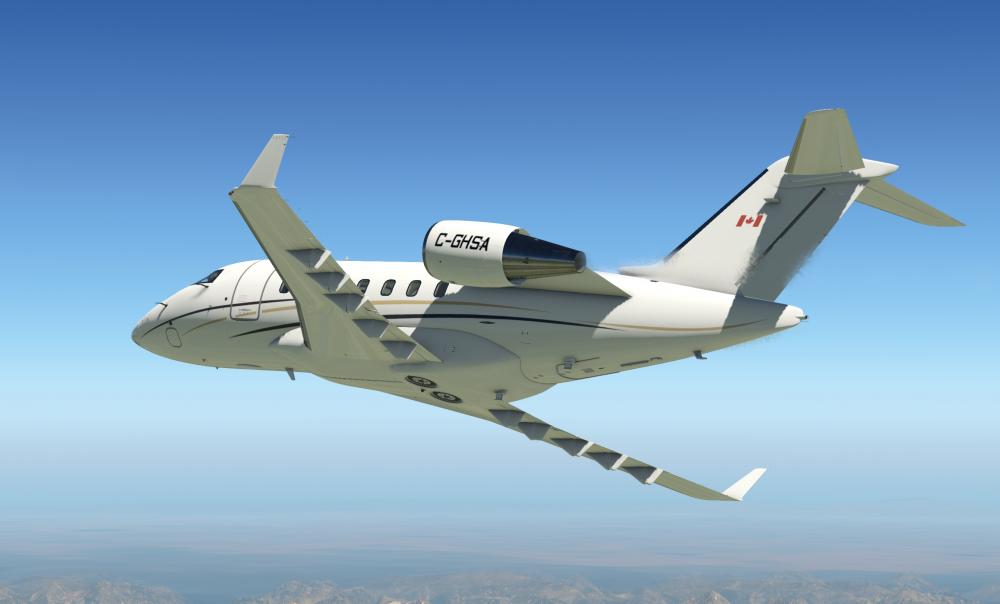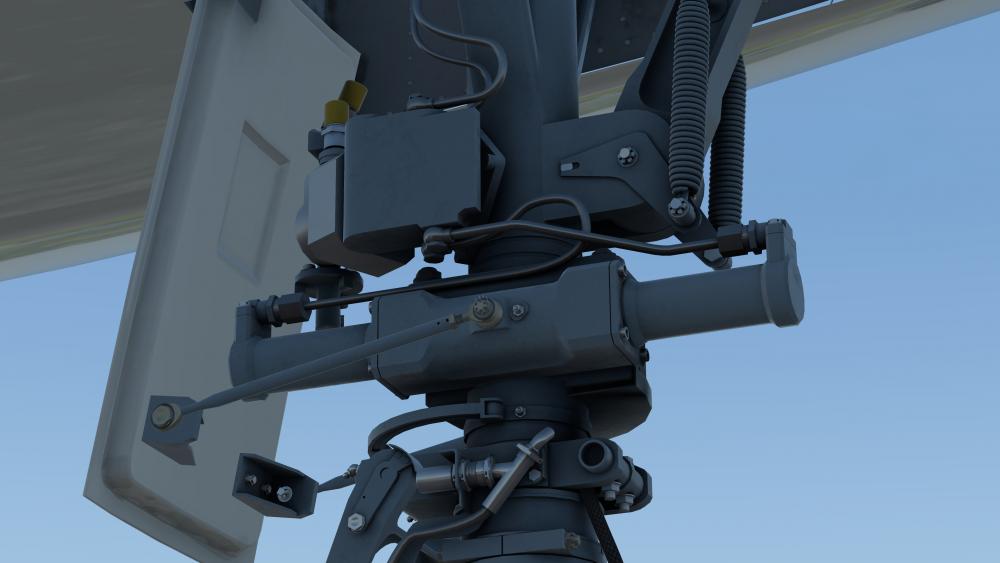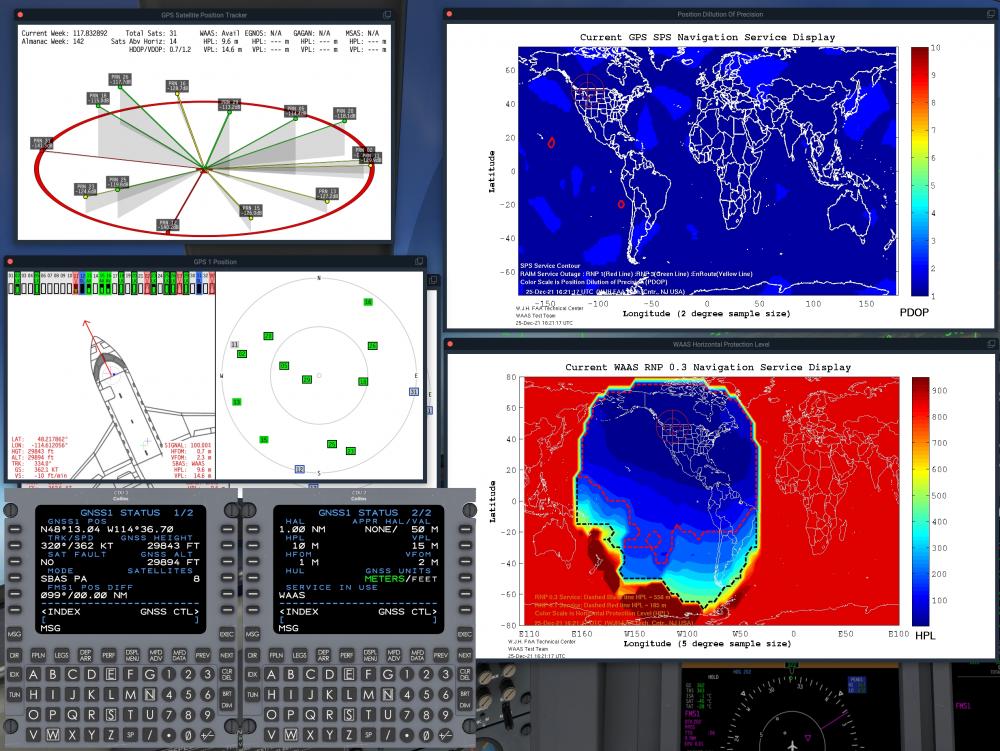Leaderboard
Popular Content
Showing content with the highest reputation on 12/27/2021 in all areas
-
First off, on behalf of the teams at Hot Start and X-Aviation, Merry Christmas and Happy Holidays! The following is a little gift to you from our teams. As many of you may know, Hot Start has been hard at work on a new X-Plane 11 add-on aircraft for the past 3 years, the Hot Start Challenger 650. As with the TBM 900, this aircraft will be released under the Take Command! series, as the simulation merits the label. In fact, the simulation you will experience with this product is to a level of realism never seen before in a consumer based flight simulator, so get ready for some fun! The project is nearing completion and we’re ready to start showing you some of the features you can look forward to in the near future. Hot Start designs products with the goal of making them feel like living, breathing machines, without obscuring the finer details of what goes on “behind the scenes” of the simulation. They're all about learning new things, while having fun at the same time. The Take Command!: Challenger 650 will embody this concept even more than our previous project, the Take Command!: Hot Start TBM 900. Nearly every part of the Challenger 650 simulation has been designed from first principles. Basic laws of physics, such as conservation of energy, momentum, the laws of thermodynamics and much more. Every system is recreated from the ground up in custom code, completely independent of X-Plane’s own platform. But before we get into the convoluted details of systems, let’s first start out with visuals. After all, while the systems and aerodynamics make a simulation enjoyable in the long term, it is the visuals which catch your attention. Now, while the exterior model is quite simply stunning to look at, let me give you some numbers to give context to these images. We have pulled out all the stops on this one and decided to place our minimum supported GPU configuration at a still relatively decent Nvidia GTX 970 or Radeon RX 570. This allowed us to up the detail level quite considerably. All in all, the entire visual model contains over 6.2 million triangles and texture detail that is designed to look great even if you were to walk up close to the fuselage. Click on the image below to see it in all its 4k glory. 3D geometry was used to recreate details such as the downlock assist springs, and even the split pins used to secure safety-critical fasteners in place. This level of detail isn’t achieved at the cost of performance. We make extensive use of the “object-kill” functionality in X-Plane, where we eliminate objects that would otherwise be invisible. For example, when you are inside of the aircraft, we eliminate most of the exterior objects entirely, avoiding the GPU rendering toll, as well as the CPU cost associated with sending out the draw calls for these objects. The theme of exquisite visual detail carries on into the interior of the aircraft. After all, that is where you will be spending the majority of your time. The cockpit, as well as the cabin, have the appearance of a premium luxury product, because that is exactly what business jets are. Copious use of double-stitched leather, soft-touch upholstery and fine wood veneers and finishes. Since business jets get relatively little use (only around 200-300 hours per year), they’re not nearly as scuffed and worn out as a typical airliner. Carrying over the theme of simulating everything down to the finest detail, the night lighting is refined to an insane degree. We’ve simulated every lamp individually in the aircraft. Not just every light in the cockpit panels. Everything, including flood lights, exterior service lights, cabin lights. In all, there are over 330 individual lamps simulated and over 500 dynamic light sources placed throughout the aircraft. Every one of the individual lamps contributes to electrical load on the aircraft’s electrical buses, and then gets summed up in the electrical load on generators and power sources. The avionics are of course an extremely faithful custom recreation of the Collins Pro Line 21 Advanced suite. Taking advantage of modern graphical horsepower, we’ve decided to reproduce the visuals down to being able to discern individual pixels on the screens. One important detail to keep in mind is that these are not just skin-deep fakes, where all we care about is that they look believable on the surface. The avionics are actually separated out into individual computers, each running independent of each other. Each computer runs in its isolated thread and can only exchange data with other computers via simulated serial data buses. When an avionics component wants to communicate, there needs to be a real data bus connecting the two (possibly by traversing over multiple hops on the internal data network), and data needs to be serialized and deserialized from the data bus. So there really are 3 independent FMCs, communicating in real time with each other, sending screen outputs to the separate CDUs, and a myriad of other simulated computers. There are probably well over 50 independent computers running, each handling one aspect of the aircraft’s operation (to tell you the truth, @skiselkov lost count). They only learn of the outside world through simulated sensor inputs (each of which has simulated noise and errors), and then they must make sense and make decisions as best they can from those inputs. None of the computers has access to “hidden knowledge.” As far as they’re concerned, they’re really flying an aircraft and they simply try to do the best job they can. Oh and of course, you can fail each individual component on the aircraft, down to cutting interlink data buses between computers. In all, there are over 1,400 individually programmable failures, which can also be saved into pre-made scenarios and reloaded at will (or shared with others for extra fun!). Yes, you read all of that right. Yes, as stated at the beginning of this announcement, this simulation is that crazy in-depth. Now this writeup is getting a little bit long, so we'll just finish on one more feature set. While we take pride in creating fun and entertaining simulations, another of our key goals is to help users expand their knowledge and appreciation of how real aircraft actually work. To that end, rather than hiding all the systems complexity behind a pretty-looking instrument panel, we take the opposite approach. We want you to see how the “sausage is made.” This is why the aircraft includes lots of “study” displays that show you exactly what the internal state of each system is and most also include thousands of lines of tooltip hints which you can bring up by simply hovering your mouse over a data field. The goal of these displays is to show you how a system works internally, and how it responds when you perform an action as a pilot. Rest assured, we’ve barely scratched the surface here. There’s lots more juicy stuff awaiting exploration in the Take Command!: Hot Start Challenger 650 and we can’t wait to show it all off in the very near future. And now for the most important part... The question that’s probably on everyone’s mind at this point: when can we get our hands on it? Well, at the moment we expect to have you able to fly and experience this amazing Challenger 650 experience on Jan 7, 2022. If for some reason this changes we will give you a heads up, but for now you can go with the assumption this will be the day. We will also be doing daily preview streams like we did with the TBM-900 starting Jan 3, with each stream going for 1 to 1.5 hours. We will send daily reminders to our newsletter list prior to each stream. Each day, we’ll focus on one particular area of the feature set. As complex as this add-on is, we highly suggest you to watch these streams to get a good understanding of what's to come. We're excited. Three years comes down to this, and we can't wait for you all to experience what's been created here. Get ready, and we'll see you on the streams very soon!3 points
-
Version 2.3.0
15,070 downloads
ATTENTION: To use this aircraft, you must own a X-Aviation product, to get Gizmo plugin. If you don't own one, please don't download this aircraft! P.180 Avanti II for X-Plane 11 - CURRENT VERSION: 2.3.0 (uploaded at: February 25th, 2020) If you want to support P.180 Avanti development, please donate here: PAYPAL v2.3.0 Main Features Compatible only with EXPERIMENTAL FLIGHT MODEL (11.40+), capable of flying up to M.67 at altitude. Terrain Radar operation via PFD/MFD buttons. Tablet for aircraft loading (engines must be off and the aircraft stationary), and access to AVITAB. Librain Support. See Change Log for more! If you don't have Gizmo already installed in your X-Plane copy, there is an version of Gizmo in the folder extra files. Put the Gizmo.plugin folder in you X-Plane 11/Resources/plugins folder. If you already have Gizmo, DO NOT SUBSTITUTE the existing one with this. MIGHT BREAK OTHER GIZMO ADDONS!!! If you find reflections too high, in the extra files folders are textures to change that. Copy the low reflections texture into the objects folder, and replace the existing one! v2.2.0.VR NOW VR COMPATIBLE with the help of SimVRLabs! OFFICIAL SUPPORT: Official Bug tracker: https://bitbucket.org/iliastselios/p180_avanti/issues?status=new&status=open Support Forums: DESCRIPTION: As you might already know this aircraft is based on X-Plane's default P.180 Avanti , originally designed for X-Plane 8, was included in X-Plane 9, and from that point has been overhauled to Avanti II version. This is aircraft is totally FREE! It is a "return" to the X-Plane community that supported us those last 4 years that we exist as a development team! This aircraft main features are: High quality visuals, cockpit all new 3D model and textures, including PBR materials. Simulated: a. startup and shutdown procedures b. engine controls and operations c. autopilot controls and operations d. partially operation of the electrical, pneumatic, hydraulic, fuel systems. Emulation of Proline 21 avionics suite. Currently there is only one layout that will allow you to operate the aircraft in all scenarios. Many improvements will come in the future. Installation in the 3D cockpit of the default X-Plane 11 FMC. Improved flight characteristics. Internal custom lighting. Of course Avanti development is not stopping here! Actually the overall development will be continuous, and the aircraft will always be in beta stage. Updates and upgrades will be available frequently! Main planned future upgrades are: Adding more functionallity to Proline 21 avionics suite, heading from an emulation to a simulation. Custom NAV maps. Custom FMC. Fully simulation of all systems. New 3D model from ground up. Improved flight model. Avanti EVO. Special thanks to: Austin Meyer for giving his permission to use parts of the Avanti on this project and X-Plane by Laminar Research that gave us this magnificent simulator! The team that originally developed Avanti for X-Plane, Robert Pearson (aerodynamics), Massimo Durando (cockpit & 3D cockpit), and Javier rollon (External Model. JRollonPlanes www.jrollon.com) for his fantastic 3D work. @Hueyman for the propeller 3D model and the prop disc images. Ben Russell of Gizmo64 for his support and that made available to us that powerful tool (aka Gizmo), and Cameron Son of X-Aviation for the support. And of course X-Plane community for the interest in that project and patient to wait to be realized!1 point -
Version 1.0.0
153 downloads
Hello there, This is the PP-VOE from VARIG to be used with IXEG 737-300 v1.21 Here you will find: - Gray Color correction - Oil in Flaps - Brighter window frames - New interior matching the old VARIG - Corrected baremetal surfaces - Dirty engines Hope you like. have good flights!1 point -
1 point
-
Finally! This will be the first high level Business jet in simulation history!1 point
-
Looks amazing! Day one purchase for sure. will it come with a smartcopilot cfg?1 point
-
Hm, I'll need to dig into what command that knob is currently using.1 point
-
What a nice christmas gift ! How could you do a better job than modeling the TBM ? Indeed, you did it ! In one word : "bravo" !1 point
-
The REGA variant, including cabin, will come out as a free update after initial release.1 point
-
1 point
-
1 point
-
Version 1.6
469 downloads
C 1 7 2 S P – W I D E P A N E L P R O J E C T Copyright © 2013 Talisman illustration design – Alan Fletcher / Alain Fréchette. All rights reserved. All art material contained in this archive is exclusive copyright of Talisman illustration design. No art files within, in part or in whole, may be copied, modified, re-distributed, disassembled, re-packaged or in any way be exploited for any commercial purpose without the express permission of Talisman illustration design. Any comment, suggestion mail to: alfletcher2@yahoo.ca ------------------------- HARDWARE REQUIREMENTS ------------------------- Fast CPU (Multi core recommended) Fast GPU (1 Gb vram minimum) Large screen (minimum 1920 px wide, 2048 px or more recommended) X-Plane 10 running at 64 Bit mandatory for smoothness This panel might not be compatible with some SAITEK products including SWITCH PANEL, RADIO PANEL, THROTTLE QUADRANT, TPM. The SAITEK Yoke System is ok. Some simmers reported no problem using some of them though. Give a try and report any problem. For trouble free operation, user should only use mouse to actuate knob and lever. -------------- INSTALLATION -------------- Unzip the file «C172SP_WidePanel_C.zip» and copy the extracted content into your .../Aircraft/General Aviation folder. For maximum experience copy, one by one, the provided «Resources files» into their corresponding X-Plane «Resources folder» (don’t forget to make a copy of the original files in case of problem). I recommend the usage of the excellent plugin X-Hobb (http://forums.x-plan...&showfile=11770). Enjoy! Be sure to check the ReadMe file included in this archive for more details. ----------------- VERSION HISTORY ----------------- Ver 1.0 – March 9, 2013 Initial Release Ver 1.1 – March 9, 2013 Fixed a bug found in the Checklist actuating system. Ver 1.2 – March 10, 2013 Fixed a problem with the 3D propeller as viewed from outside to appear not moving. Fixed a problem with navcom radios restricting ATIS and VOR signal to be heard. Add yokes visibility trigger (click on tail number plate to hide/show) Ver 1.3 – March 10, 2013 Fixed a problem with the fuel pump switch showing in a carburated engine. I simply removed it to be consistent. Ver 1.4 – June 4, 2013 DME receiver added (Bendix/King KN 62A) Extinguisher now fully functionnal. Follow Emergency Procedure if cabin fire occurs. Added a hidden switch over the pilot’s yoke to set input mode if yokes flicking occurs. Fixed a bug with the Variometer showing inaccurate vertical speed rate. Fixed a bug preventing the Transponder breaker to fail the device in specific configurations. Fixed a bug with the Autopilot device regarding altitude hold and ILS (GS) tracking. Fixed a bug in the Flaps actuation system preventing fixed increment adjustments with joystick input. Fixed a minor bug related to Vacuum gauge needle not turning off when electrical power fell below critical voltage. Starter sound improved. Ver 1.5 – September 6, 2013 Fixed a bug related to the Transponder Power Mode Knob turning the device off under specific condition. Ver 1.6 – November 9, 2013 Fixed a bug related to the Elevator Trimwheel System failing under specific condition. ---------------- MAIN FEATURES ---------------- Project entirely developed in Plane Maker (no plugin involve yet) Match the specifications of the C172SP model modified for training purpose like a P model (160 HP, carburated, 30° max flap setting) A fuel injected, 180 HP with HSI version will be released later, depending how the current release is received Custom HD panel 2048 x 1840 pixel (implemented into the stock C172 from X-PLANE/www.dmax.it) (2D version only / 3D cockpit disabled) Day and Night textures Custom livery Custom sounds (Engine/Prop, Ground roll and contact, Skid, Ignition/Starter, Master/Avionics Switches, Primer, Breakers, Key set, Autopilot warn, Trim wheel, Flaps, Rain and Wind) -------- WARNING -------- This project required hundreds of hours of labor and thinking to make it as close as possible to the real thing. I pushed to the limit the hacking concept of X-Plane in many ways, using wrong dataref to trigger actions and instruments. The electrical system for example is highly customized to bypass some strange behaviours found initially in the coding of X-Plane. Due to the complexity of this project (just open it to see by yourself) DO NOT ATTEMP to modify the «.acf» file provided. Doing so is at your own risk. Keep the original ZIP file for backup purpose.1 point























